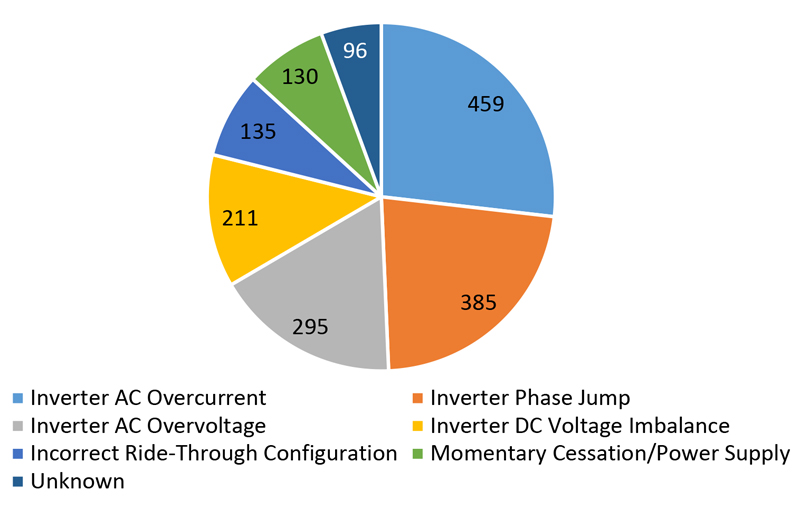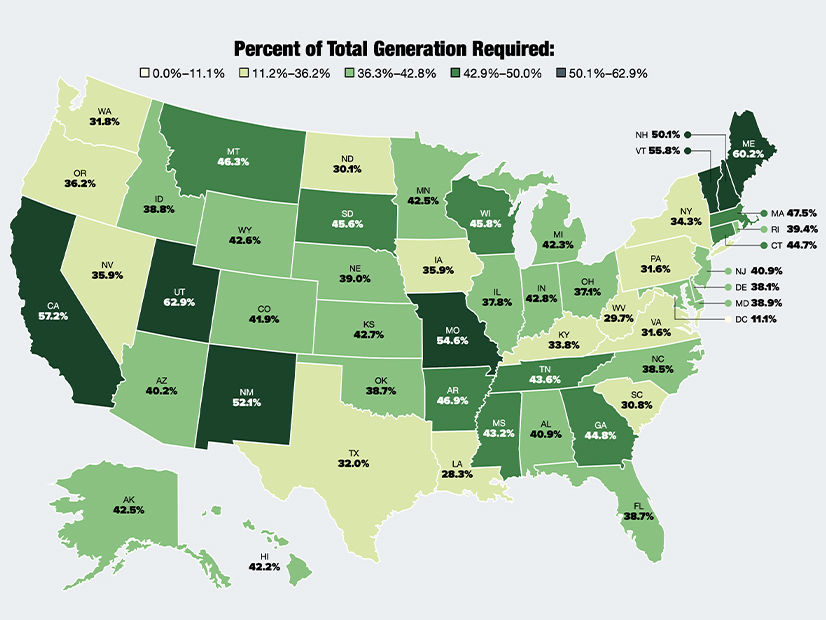The PJM Planning Committee last week reviewed a slate of proposals to address capacity interconnection rights (CIRs) for effective load-carrying capability (ELCC) resources.
The proposals aim to set long-term accreditation rules for intermittent resources, as well as transitional rules until those changes can be fully implemented.
The bulk of the differences among the five packages of governing document and manual revisions is how resources would be accredited during the transition, ranging from capping their capacity at their current CIR holdings, to granting them higher CIRs at the onset and having load pay for the associated transmission upgrades.
“That was really where the bulk of our conversations to date took place: What do we do with existing queue units? How and when do we make these changes effective?” PJM’s Brian Chmielewski said during the first read of the packages at the PC’s meeting Dec. 6.
LS Power’s Package E received the largest share of support in an October poll, at 44%, followed by Packages D and I from PJM, which received 40% and 28%, respectively. (See “Poll Opened to Gather Support for Packages on CIR for ELCC Resources,” PJM PC/TEAC Briefs: Oct. 4, 2022.)
The company’s proposal would immediately limit a generator’s accreditation to its CIRs, require facility owners seeking higher accreditation to re-enter the interconnection queue at the back of the line and require that they be responsible for any transmission upgrades associated with the higher accreditation.
Package I was reworked after the poll results with the aim of creating a compromise proposal. It would cap existing generators’ accreditation at their CIRs, as Package E does, but it would also allow them to participate in a transitional system capability study to evaluate if they can utilize existing headroom on the transmission system until it is claimed or the transition process is completed.
To be eligible to receive a transitional study, an existing generator must request a CIR uprate from PJM within 30 days of the passage of the package, if it is ultimately selected by stakeholders. The higher CIRs being sought cannot involve any physical modifications to the facility. While it was originally envisioned that only ELCC resources, namely wind and solar, would be eligible for this process, it was widened to all resource types at stakeholders’ request.
Chmielewski said that under the anticipated path the proposal would take for endorsement through the stakeholder process, the request window would open Feb. 2 and the studies completed by April 21.
 Tom Rutigliano, NRDC | © RTO Insider LLC
Tom Rutigliano, NRDC | © RTO Insider LLC
Tom Rutigliano, of the Natural Resources Defense Council, said prohibiting resources seeking higher accreditation from utilizing existing headroom until their request can be processed would “artificially exclude capacity from the market for most of the remainder of the decade.” Both Packages E and G preclude the use of transmission headroom.
“From the environmental point of view, it’s really important whatever package we get to doesn’t leave that transmission idle while excluding capacity from the capacity market. That’s just throwing out something valuable for no reason,” Rutigliano said.
PJM’s Package D would conduct new generator deliverability tests and apply higher CIRs for existing wind and solar resources — including those still in development but already holding interconnection service agreements — starting with the 2023 Regional Transmission Expansion Plan. Any upgrades identified would be paid for by load.
Both the cost of shifting those upgrades to load and allowing existing generators to receive higher CIRs, or a transitional higher accreditation, have been points of contention for stakeholders throughout the process, with cost estimates reaching into the billions. (See Stakeholders Challenge PJM in Capacity Accreditation Talks.)
Package G, from E-Cubed Policy Associates, is similar to LS Power’s proposal, except in expanding the deliverability testing to include more months — particularly September, as there have been increasing reliability concerns at the start of the fall maintenance period.
The proposal would also allow generation owners retiring their assets to request an expedited CIR review for new generation being developed on the same site using the existing interconnection point.
 Tom Hoatson, LS Power | © RTO Insider LLC
Tom Hoatson, LS Power | © RTO Insider LLC
Finally, the newest of the five packages, K, was introduced by Tom Hoatson, director of Mid-Atlantic policy for LS Power, during last week’s meeting. It contains many of the same provisions as Package I while including an ask that the PJM Board of Managers direct the RTO to submit a request to FERC to clarify that the Reliability Assurance Agreement establishes CIRs as the hourly upper limit for the unforced capacity accreditation, commencing with the 2025/26 Base Residual Auction (BRA), scheduled for next June.
The introduction of the proposal comes from a concern that Package I runs too strong of a risk of not being actionable in time for the BRA, leaving that auction to be held under the current rules.
“We have an issue with that; we want this thing to finally be resolved. We’ve been going through this for two or three years; we have had multiple BRAs impacted by this,” Hoatson said. “I actually like Package I, but for the concern of it not being in place for June.”
The five packages will receive a first read at this month’s Markets and Reliability Committee meeting.



